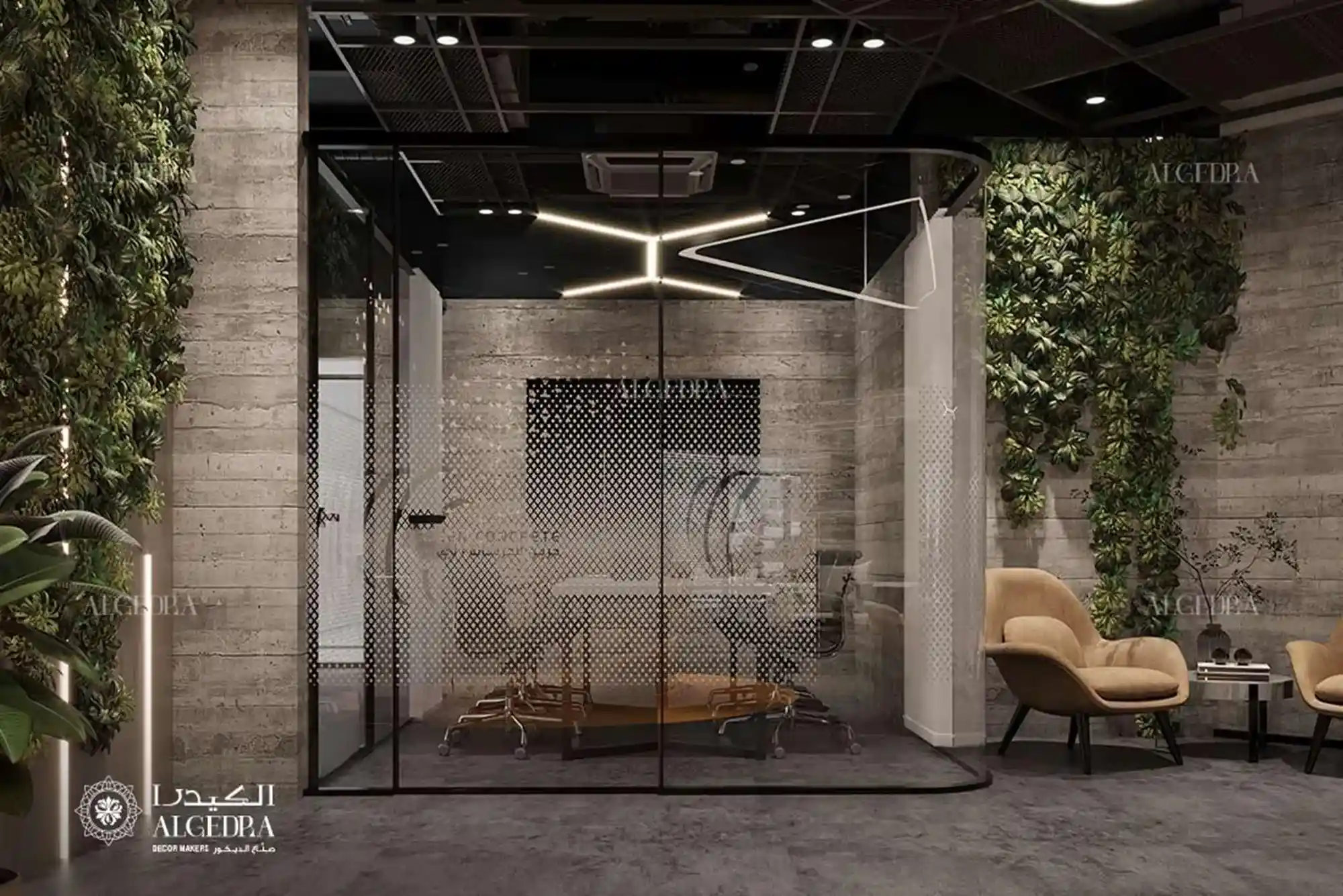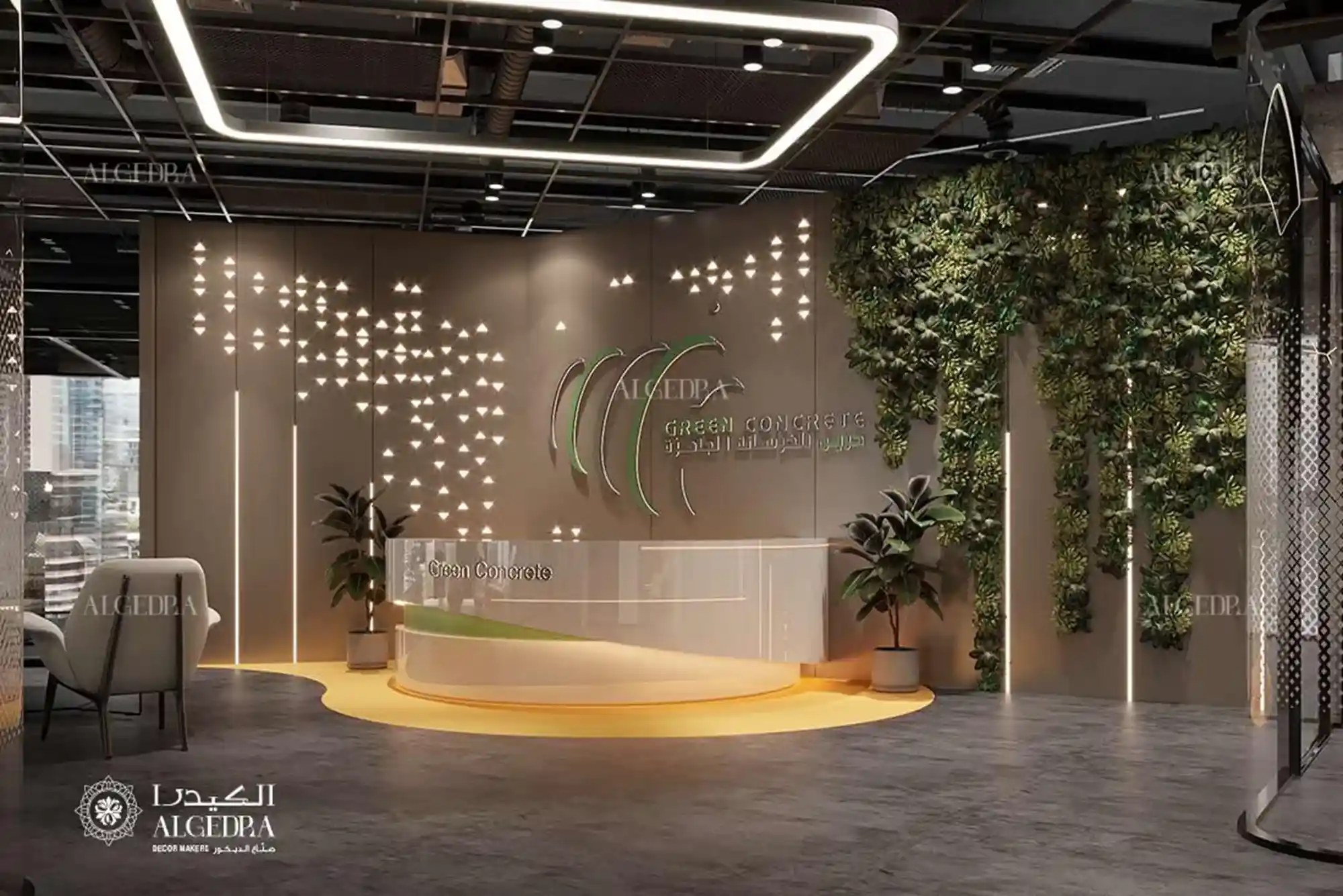Tareq Skaik is an interior designer in Dubai as well as the co-founder of Algedra that is one of the best interior design companies in Dubai, known for its luxury and high-end interior designs. Within the rapidly evolving corporate world, an office setting has the potential to greatly impact worker well-being, creativity, and productivity in addition to being a place of employment.
Reputable interior designer Tareq Skaik in Dubai knows how important it is to design areas that strike a balance between practicality and style. He approaches office interior design with a profound awareness of how well-considered design can improve a workstation, making it both productive and inspiring.
Understanding the Modern Office
Understanding the Modern Office” refers to analyzing and comprehending the significant transformations that the workplace has undergone in recent years due to advancements in technology, shifts in work culture, and evolving business needs. The modern office isn’t just a physical space where employees work; it now encompasses remote, hybrid, and collaborative environments facilitated by digital tools and flexible work policies.
Key Aspects of the Modern Office:
- Technology Integration: Digital transformation is at the core of modern offices. Cloud-based software, communication platforms (like Slack, Zoom, or Microsoft Teams), project management tools, and artificial intelligence are widely used to enhance productivity, collaboration, and efficiency. These tools allow teams to work seamlessly, even when not physically present.
- Flexible Work Arrangements: The modern office often supports various work arrangements, such as remote work, hybrid work (a combination of in-office and remote), and flexible hours. These options give employees more autonomy, contributing to better work-life balance and increased job satisfaction.
- Collaborative Spaces: Modern offices prioritize collaboration through open workspaces, breakout areas, and shared zones where employees can brainstorm, socialize, and engage in teamwork. Traditional cubicles are being replaced by dynamic layouts that foster interaction and creativity.
- Sustainability and Wellness: Many modern offices now focus on sustainable design and employee well-being. This includes eco-friendly materials, energy-efficient designs, and spaces that encourage healthy behaviors like standing desks, ergonomic furniture, and wellness programs. Mental health support and a balanced work environment are also increasingly important.
- Focus on Company Culture: Organizations today emphasize cultivating a strong company culture within the office. This culture is reflected in the design of the workspace, the communication style, and the sense of community. Whether in a physical office or a virtual setting, building a positive, inclusive culture is key to employee retention and engagement.
- Adaptability and Resilience: The modern office is designed to be adaptable. Whether through reconfigurable furniture, multipurpose spaces, or the ability to scale technology up or down, businesses aim for resilience in the face of changing circumstances .
Designing for Functionality

One of the key aspects of office interior design is functionality. Every element in the space, from the layout to the choice of furniture, should contribute to the efficiency of the workspace. Tareq focuses on creating designs that optimize space usage, ensuring that every square meter is utilized effectively. Whether it’s through flexible workstations, integrated storage solutions, or well-placed meeting areas, the goal is to create a space that supports productivity.
Incorporating Aesthetic Appeal
An office space’s visual appeal is important, even if utility is also quite significant. Modern finishes, crisp lines, and careful consideration to small details are characteristics of Tareq Skaik’s works. To create an environment that is visually appealing, he frequently incorporates features like natural light, plants, and art. These components improve the office’s overall appearance and also help create a happy environment, which can have a significant effect on staff morale.
Ergonomics and Employee Well-being
A well-designed office prioritizes the comfort and health of its employees. Ergonomics plays a critical role in Tareq’s designs, with careful consideration given to the choice of furniture, lighting, and even color schemes. By focusing on elements that reduce strain and promote well-being, Tareq creates spaces that are not only beautiful but also conducive to long-term employee health.
Sustainability in Design
Sustainability in Design” refers to the practice of creating products, buildings, and systems that are environmentally responsible and resource-efficient throughout their life cycles. This approach aims to minimize negative impacts on the environment while maximizing social and economic benefits. Sustainability in design is increasingly important as awareness of climate change, resource depletion, and environmental degradation grows.
Key Principles of Sustainability in Design

- Resource Efficiency: Sustainable design prioritizes the use of renewable resources and minimizes the consumption of non-renewable materials. Designers focus on efficient use of materials and energy, reducing waste during production and throughout the product’s life cycle.
- Life Cycle Assessment (LCA): Designers often conduct a life cycle assessment to evaluate the environmental impact of a product from its raw material extraction to disposal. This comprehensive approach helps identify areas for improvement and encourages the selection of more sustainable materials and processes.
- Energy Efficiency: Sustainable design aims to reduce energy consumption through efficient building systems, passive design strategies, and the use of renewable energy sources (like solar or wind). This not only lowers operational costs but also reduces the carbon footprint.
- Biophilic Design: Incorporating natural elements into design, known as biophilic design, enhances well-being and fosters a connection to nature. This can include using natural light, integrating plants, and utilizing organic materials to create healthier living and working environments.
- Sustainable Materials: The choice of materials is crucial in sustainable design. Designers look for materials that are recycled, reclaimed, or sustainably sourced (such as bamboo or reclaimed wood). These materials have lower environmental impacts and contribute to a healthier ecosystem.
- Waste Reduction: Sustainable design emphasizes minimizing waste through practices such as designing for disassembly (making it easier to recycle or reuse components), reducing packaging, and implementing circular economy principles, where products are designed to be reused, refurbished, or recycled at the end of their life.
- Social Responsibility: Sustainability in design also considers social equity and community impact. This includes ensuring fair labor practices, engaging local communities, and creating products and spaces that enhance quality of life for all users.
- Adaptability and Resilience: Sustainable designs are often adaptable to changing environmental conditions, ensuring that structures and products can withstand climate changes and remain functional over time. This resilience is critical in addressing the uncertainties of the future.
- Regenerative Design: Going beyond sustainability, regenerative design seeks to restore and revitalize ecosystems. This approach involves creating designs that enhance biodiversity, restore natural habitats, and contribute positively to the environment.
Applications of Sustainability in Design:
- Architecture and Urban Planning: Designing buildings and urban spaces that use sustainable materials, maximize energy efficiency, and enhance community well-being.
- Product Design: Creating consumer goods that are durable, easy to repair, and made from sustainable materials, thereby reducing environmental impact.
- Fashion Design: Emphasizing eco-friendly fabrics, ethical manufacturing processes, and promoting circular fashion practices, such as recycling and upcycling.
- Graphic Design: Using sustainable practices in printing and materials, such as eco-friendly inks and recycled paper, while also promoting sustainability messages through design.
Tareq Skaik’s approach to office interior design creates environments that are exciting, useful, and productive—going beyond just aesthetics. Because of his careful attention to particulars, the office is a place where employees are inspired to provide their best efforts because every aspect of it adds to the company’s success as a whole.
For more information check https://www.tareqskaik.com/










